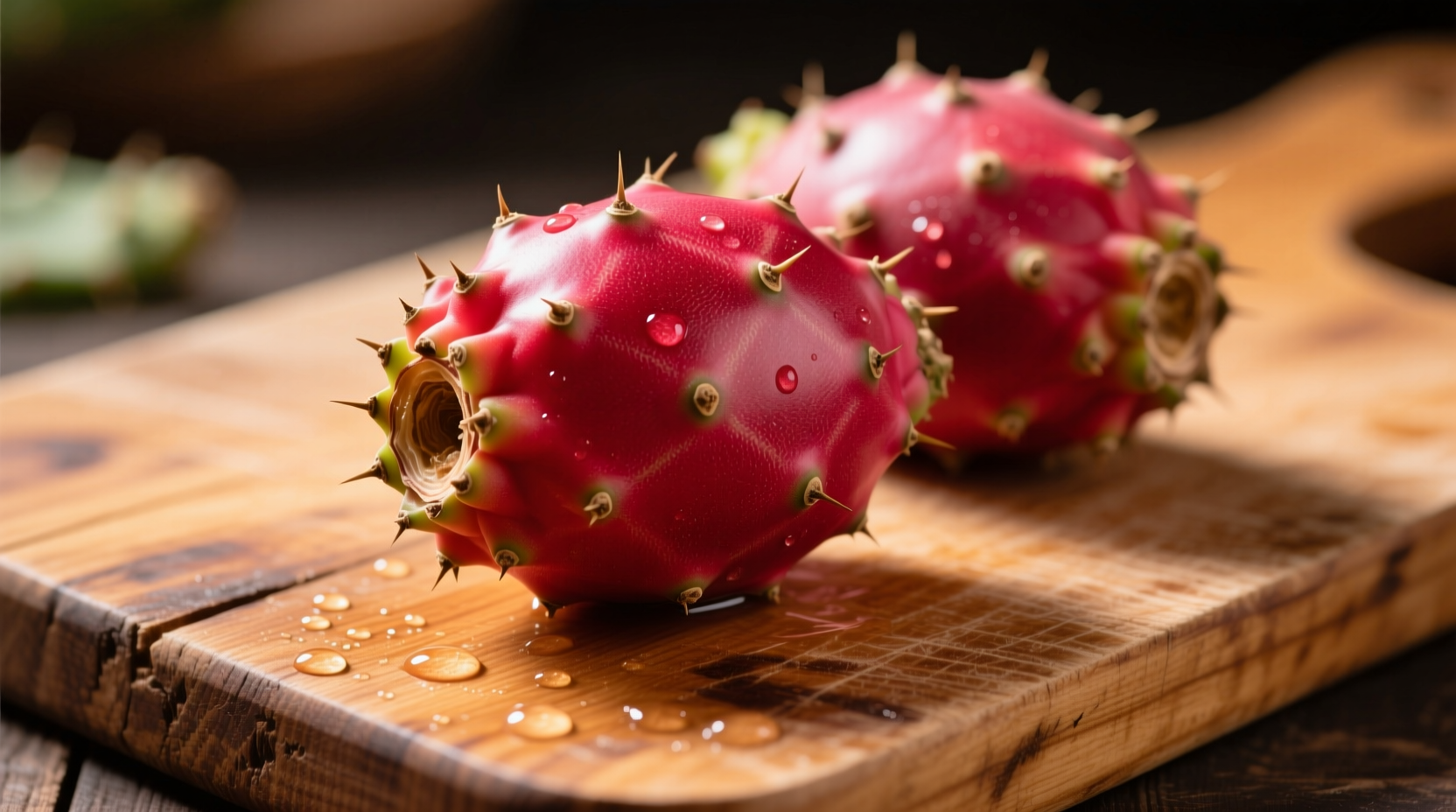Curious about the distinctive flavor of cactus fruit? You're not alone. As this vibrant desert treasure gains popularity beyond its traditional Latin American roots, more food enthusiasts want to know exactly what to expect when biting into this spiky-skinned fruit. Let's explore everything you need to know about the taste, texture, and culinary potential of cactus fruit.
Your Complete Guide to Cactus Fruit Flavor Profile
Native to arid regions across the Americas, cactus fruit—most commonly harvested from the Opuntia genus—offers a complex flavor experience that varies by variety and ripeness. When perfectly ripe, cactus fruit delivers a harmonious balance that has captivated palates for centuries.
Breaking Down the Taste Experience
The flavor journey begins with an initial burst of sweetness similar to watermelon, followed by subtle floral notes that distinguish it from more common fruits. As you continue chewing, you'll detect:
- A gentle tartness comparable to kiwi or raspberries
- Underlying citrus notes that refresh the palate
- Faint bubblegum-like undertones (particularly in the red varieties)
- A clean, slightly vegetal finish reminiscent of cucumber
The texture adds another dimension—soft, jelly-like flesh dotted with numerous small, crunchy seeds that provide pleasant contrast. Think of it as a cross between a ripe strawberry's juiciness and a passion fruit's seed texture.
| Cactus Fruit Variety | Color | Flavor Profile | Sweetness Level |
|---|---|---|---|
| Red Prickly Pear | Bright magenta | Strong berry notes, pronounced bubblegum flavor | ★★★★☆ |
| Yellow Prickly Pear | Vibrant yellow | Citrus-forward, subtle melon notes | ★★★☆☆ |
| Orange Prickly Pear | Deep orange | Balanced sweetness with tropical undertones | ★★★★☆ |
| White Prickly Pear | Pale white | Mild, delicate flavor with subtle pear notes | ★★☆☆☆ |
Seasonal Flavor Variations Explained
Cactus fruit follows a distinct seasonal pattern that significantly impacts its flavor development. According to agricultural research from the University of Arizona's College of Agriculture and Life Sciences, the fruit's sugar content and flavor complexity peak during specific months:
- Early season (May-June): Fruits are less sweet with more pronounced tartness
- Peak season (July-August): Optimal sugar-to-acid ratio delivers the most balanced flavor
- Late season (September): Higher sugar concentration creates intensely sweet fruit
This seasonal progression explains why cactus fruit enthusiasts often consider mid-summer harvests the most flavorful. The University of Arizona's research confirms that environmental factors like temperature fluctuations and soil composition directly influence the fruit's final taste profile.
Practical Tips for Selecting the Best Cactus Fruit
Not all cactus fruit delivers that perfect sweet-tart balance. Follow these professional selection guidelines to ensure optimal flavor:
- Color check: Vibrant, uniform color indicates proper ripeness (avoid greenish tints)
- Gentle squeeze test: Should yield slightly under pressure like a ripe avocado
- Surface inspection: Look for slight dimpling which signals peak sweetness
- Aroma test: Ripe fruit emits a subtle floral scent at the stem end
Remember that cactus fruit continues to ripen after harvest. Store unripe fruit at room temperature for 2-3 days to develop optimal flavor before refrigerating.

Culinary Applications That Highlight Its Unique Flavor
Cactus fruit's versatile flavor profile shines in both sweet and savory applications. Maya Gonzalez, Latin American cuisine specialist, explains: "The fruit's natural sweetness balances beautifully with spicy and savory elements common in Mexican cuisine."
Professional chefs recommend these flavor pairings that enhance cactus fruit's distinctive taste:
- Sweet applications: Lime zest, mint, basil, honey, and tequila
- Savory pairings: Jalapeños, cilantro, queso fresco, and grilled meats
- Beverage combinations: Hibiscus, elderflower, and sparkling water
For home experimentation, try adding cactus fruit to fruit salads, blending into smoothies, or creating a simple syrup for cocktails. The USDA Agricultural Research Service notes that cactus fruit contains natural pectin, making it excellent for jams and preserves without additional thickeners.
Where to Find Authentic Cactus Fruit
While availability has expanded significantly, authentic cactus fruit still follows specific regional patterns:
- Mexico and Southwest US: Widely available at farmers markets June-September
- Specialty grocery stores: Look for pre-peeled varieties in the refrigerated section
- International markets: Often sold as "tuna" in Latin American grocery stores
- Growing your own: Certain Opuntia varieties thrive in containers for home cultivation
The Food and Agriculture Organization of the United Nations reports that Mexico remains the world's largest producer of cactus fruit, with traditional harvesting methods preserving optimal flavor characteristics that commercial varieties sometimes lack.
Common Flavor Misconceptions
Several myths persist about cactus fruit's taste that deserve clarification:
- Myth: It tastes like仙人掌 (cactus pads) Reality: The fruit has no vegetal or bitter notes like nopal (cactus pads)
- Myth: All varieties taste identical Reality: Color variations indicate distinct flavor profiles as shown in our comparison table
- Myth: The seeds are unpleasant Reality: When fully ripe, the seeds add a pleasant textural contrast
Understanding these distinctions helps set proper expectations for first-time tasters exploring what does cactus fruit taste like in its authentic form.
Preserving Flavor Integrity: Preparation Tips
How you prepare cactus fruit dramatically affects its final taste experience. Follow these professional techniques to maintain optimal flavor:
- Wear thick gloves during peeling to avoid contact with tiny spines
- Use the "top and tail" method: cut off both ends, make a vertical slit, then peel skin away
- Soak in cold water for 10 minutes to remove any remaining spines
- Consume within 24 hours for peak flavor (oxidation affects taste)
For culinary applications, add cactus fruit at the last possible moment to preserve its delicate flavor profile. Heat exposure can diminish its characteristic floral notes.











 浙公网安备
33010002000092号
浙公网安备
33010002000092号 浙B2-20120091-4
浙B2-20120091-4